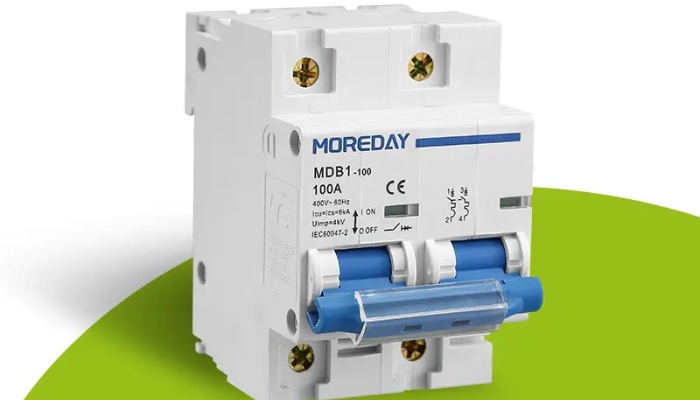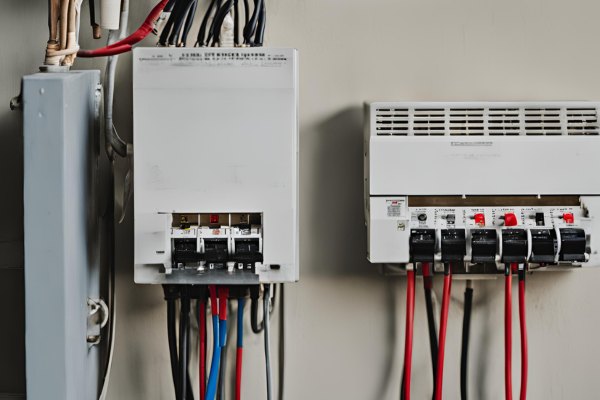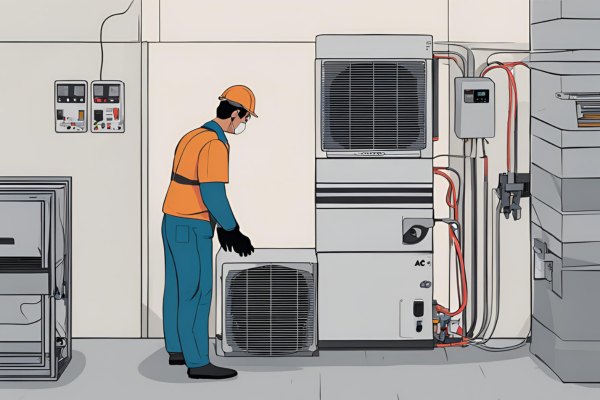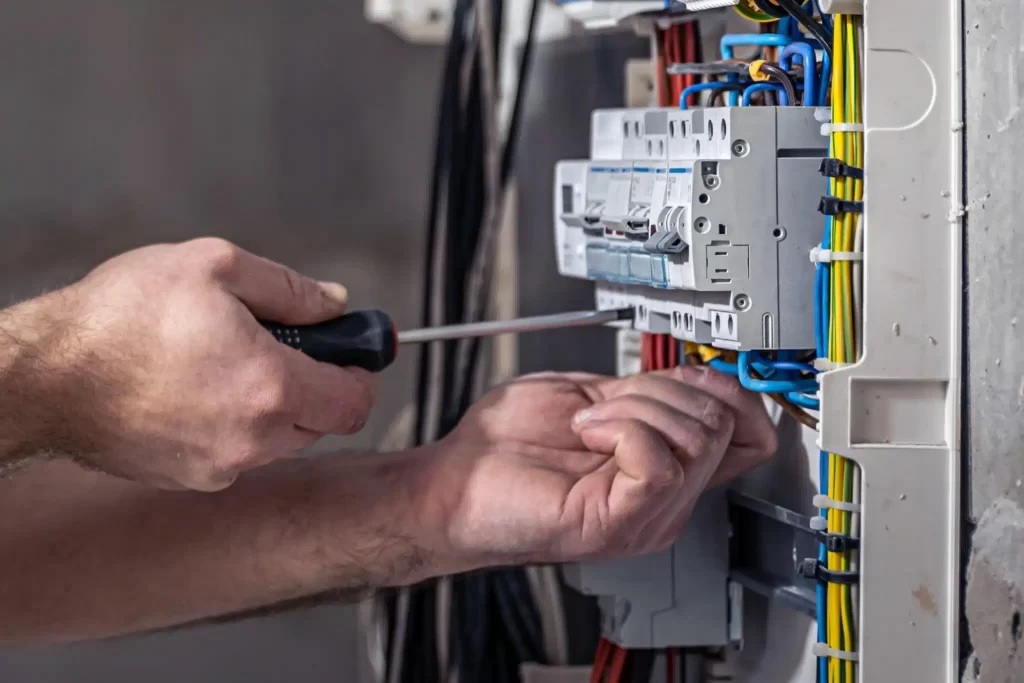When your air conditioner (AC) stops working, it can be frustrating, especially during the hot summer months. One of the most common things homeowners do when they face an AC failure is resetting the breaker. But the question remains: Does resetting the AC breaker help?
In this article, we’ll explore why an AC breaker might trip, how to reset it properly, and whether or not resetting the breaker is a solution to your problem.
What is an AC Breaker, and Why Does It Trip?

An air conditioner breaker is part of the electrical system that controls the power supply to your air conditioning unit. It is a safety feature designed to prevent damage to the system and reduce fire risks by cutting the power if there is an overload or short circuit.
The breaker might trip for various reasons, such as:
- Overloaded circuit: When the air conditioner draws more power than the circuit can handle.
- Electrical faults: If there’s a short circuit or other issues within the wiring of the unit.
- Poor ventilation or air flow: If the AC unit is clogged with debris or dirt, it may overheat, causing the breaker to trip.
- Faulty components: A malfunctioning compressor or capacitor might draw excess power, leading to the breaker tripping.
Does Resetting AC Breaker Help?

Resetting the AC breaker can indeed help resolve temporary issues with your air conditioning system. It acts as a way to reset the electrical flow to the unit, which might fix minor electrical faults or power surges that caused the breaker to trip in the first place. Here’s how it helps:
- Fix Power Surges: Power surges caused by thunderstorms, electrical grid fluctuations, or sudden spikes in demand can trip the AC breaker. Resetting it can restore power to the unit and allow it to function normally.
- Prevent Overheating: Sometimes, the breaker trips due to an overload or when the system is drawing too much power. Resetting it can resolve minor overheating issues, allowing the unit to restart and run properly again.
- Clear Temporary Faults: Resetting the breaker can help clear out any temporary issues or glitches within the electrical system, allowing the AC unit to work properly.
However, if the breaker trips repeatedly after resetting, it could indicate an underlying issue such as a short circuit, faulty wiring, or problems with the AC unit itself. In that case, it’s best to consult a professional technician to inspect and repair your system.
If you’re unsure how to proceed, you might also want to explore how to reset the AC contactor, as it can sometimes help resolve specific issues related to the air conditioning system’s electrical components.
How to Reset Your AC Breaker Safely: Detailed Steps

Before attempting to reset your air conditioner’s breaker, it’s crucial to follow the correct steps to avoid any damage or safety hazards. Here’s a more detailed guide to help you reset your AC breaker safely:
Step 1: Turn Off Your Air Conditioner
Ensure your air conditioner is completely powered off. You can do this either by turning the thermostat to the “off” position or by switching off the AC unit directly if it has an on/off switch.
Turning off the AC before resetting the breaker helps ensure no power is running through the unit, preventing potential electrical damage.
Step 2: Locate the Breaker Box
Your home’s electrical panel (breaker box) is typically located in the basement, garage, or utility room. If you’re unsure of the exact location, check with your home’s electrical blueprint or ask a professional.
The breaker box will have several circuit breakers that control the electricity supply to different parts of your home, including the AC unit.
Step 3: Identify the AC Breaker
In the breaker box, look for the breaker dedicated to your air conditioning unit. This breaker is often labeled with terms such as “AC,” “Air Conditioner,” or “Cooling System.” If the labels are unclear, refer to the electrical diagram usually found inside the panel door to identify the right breaker.
Step 4: Reset the Breaker
To reset the AC breaker, you need to first switch it to the OFF position. Firmly push the breaker switch to the OFF position. This ensures that the circuit is completely disconnected. After about 10-15 seconds, flip the breaker back to the ON position.
You should feel a firm click when the breaker is back in the “ON” state. Ensure the switch is secure and properly aligned in the ON position to guarantee proper power flow to the unit.
Step 5: Turn Your AC Unit Back On
Once you’ve successfully reset the breaker, return to the thermostat and switch the AC unit back on. Wait for a few minutes and observe if the unit starts functioning as usual.
If your air conditioner doesn’t start or trips the breaker again, there may be an underlying issue, such as an electrical fault, overheating, or a malfunctioning component, in which case you should consult a professional HVAC technician.
By following these detailed steps, you ensure that your AC unit is safely reset and ready to run again. Always remember, if you feel unsure about handling electrical components or if the issue persists, it’s best to contact a professional to avoid potential safety risks.
Does Resetting the Breaker Solve the Problem?

While resetting the breaker might temporarily fix your AC problem, it is not always the solution. The breaker might trip again if there is an underlying issue, such as:
- Overheating due to clogged air filters or dirty coils.
- Compressor failure or malfunctioning electrical components.
- Refrigerant leaks reduce cooling efficiency, causing the system to work harder than usual.
If your AC continues to trip the breaker, it’s a clear indication that a more in-depth issue exists. In such cases, resetting the breaker will only provide a short-term fix and might even lead to further damage if the root cause isn’t addressed.
Common AC Issues That Can Cause the Breaker to Trip
Here are some common problems that might lead to your AC breaker tripping:
- Dirty Air Filter: A clogged air filter restricts airflow, causing the AC to overheat and the breaker to trip.
- Refrigerant Problems: Low refrigerant levels can cause the system to overheat and work inefficiently, tripping the breaker.
- Faulty Compressor: A malfunctioning compressor can draw excessive power and cause the breaker to trip.
- Electrical Issues: Worn-out or damaged wiring, faulty capacitors, or issues with the thermostat can cause the breaker to trip repeatedly.
When to Call a Professional
If you’ve reset the breaker multiple times and your air conditioner still won’t stay on, it’s time to call a professional. Attempting to fix electrical issues without proper knowledge can lead to safety hazards.
A professional technician can:
- Diagnose the root cause of the problem.
- Inspect and clean the system, including the compressor, coils, and filters.
- Check for refrigerant leaks and fix any electrical issues.
- Perform routine maintenance to keep your system running smoothly.
Tips to Prevent AC Breaker Trips
To prevent your AC breaker from tripping in the future, follow these simple maintenance tips:
- Regularly replace or clean your air filters to ensure proper airflow and prevent overheating.
- Schedule annual AC maintenance with a professional technician to ensure the system runs efficiently.
- Check the circuit breaker to ensure it’s the right size for your AC unit. A mismatched breaker can trip more frequently.
- Keep the area around your AC unit clear of debris and obstructions to allow for proper ventilation.
- Avoid overloading circuits by plugging too many devices into the same circuit as your AC.
Following these tips can reduce the chances of your AC breaker tripping and ensure your air conditioning system runs smoothly.
For those curious about the differences, understanding DC breaker vs AC breaker can help you choose the correct type for your system, ensuring safety and reliability in the long run.
Conclusion
Resetting your AC breaker can be a helpful first step in restoring power to your air conditioner. However, it’s important to understand that repeated breaker trips often indicate a deeper issue that requires professional attention. Regular maintenance and timely repairs are the best ways to prevent frequent breaker trips and keep your air conditioner running smoothly for years to come.
If you continue experiencing issues, don’t hesitate to contact a certified HVAC technician who can identify and resolve any underlying problems. By taking proactive steps, you can keep your AC in top shape and avoid the discomfort of a broken cooling system.
If you want to replace or wholesale the AC circuit breaker, you can contact our sales staff directly online, MOREDAY will provide you with an accurate quotation!


